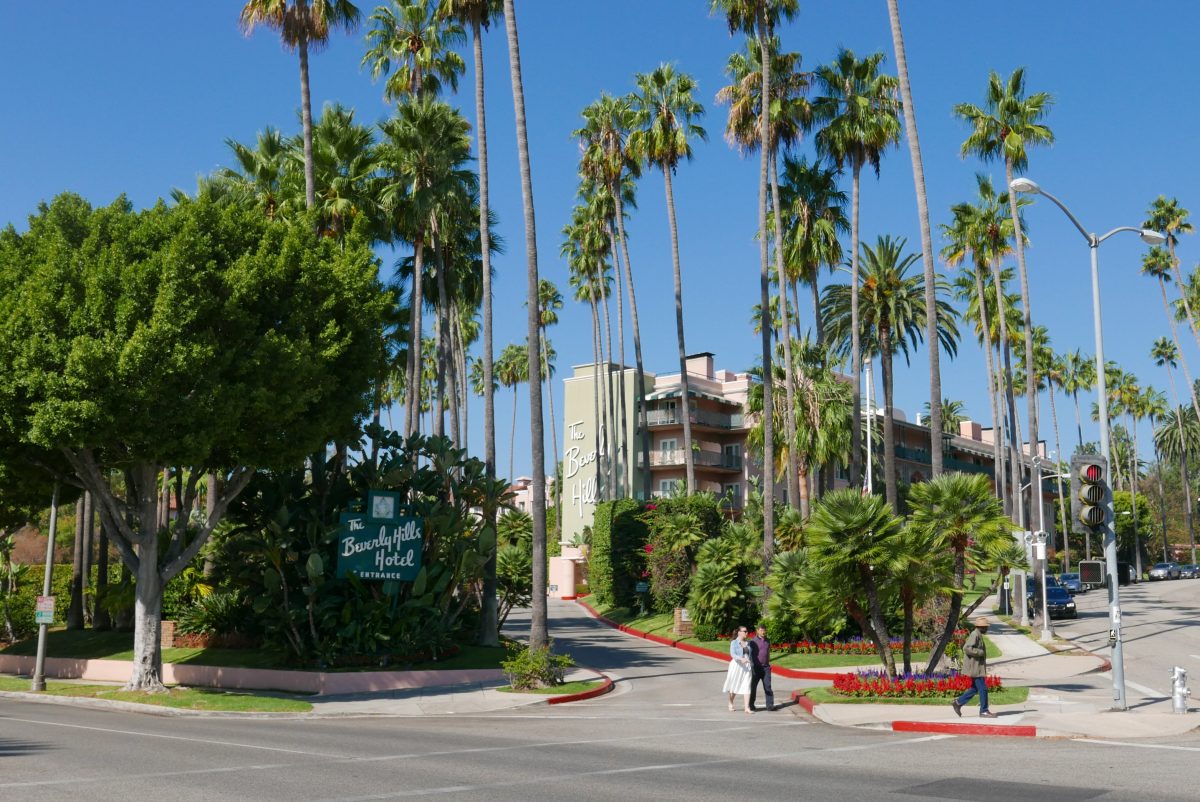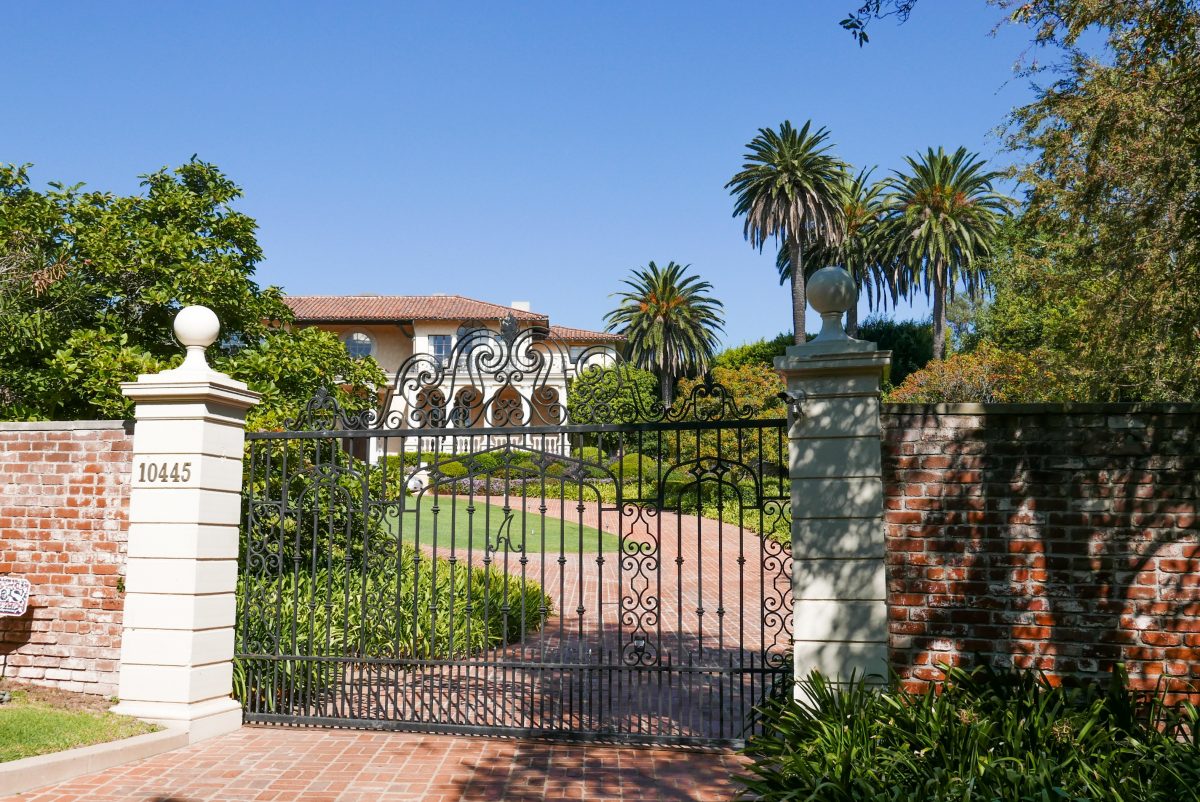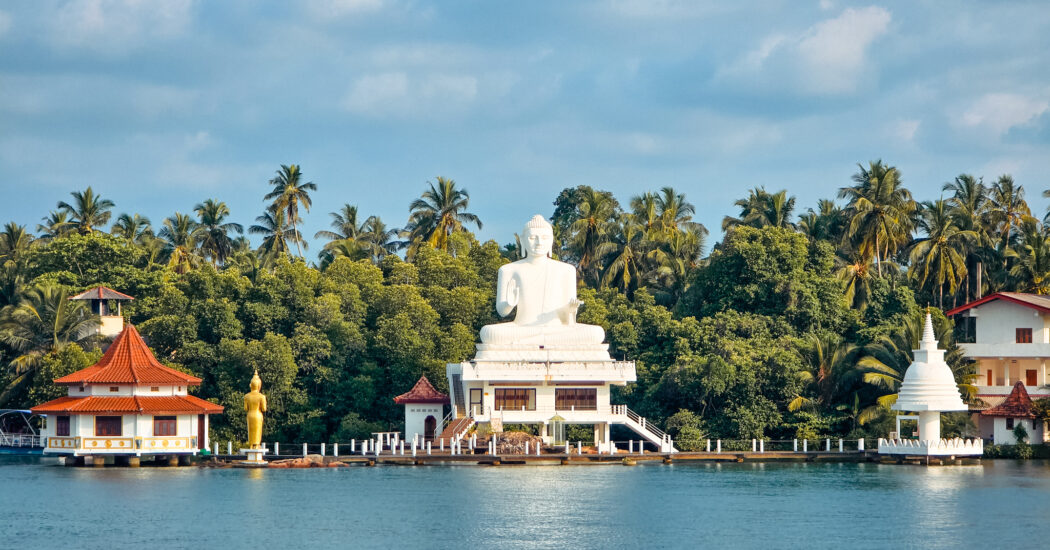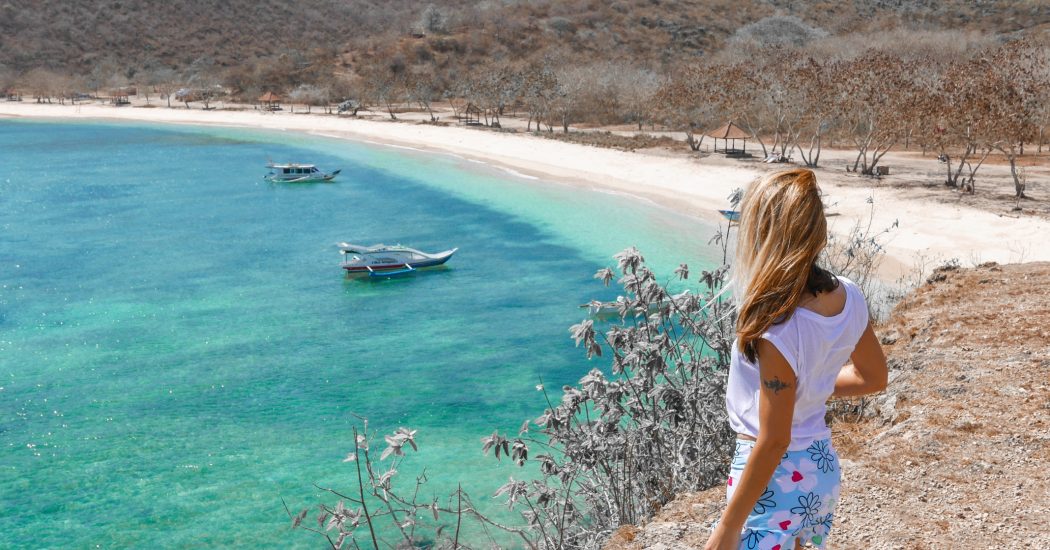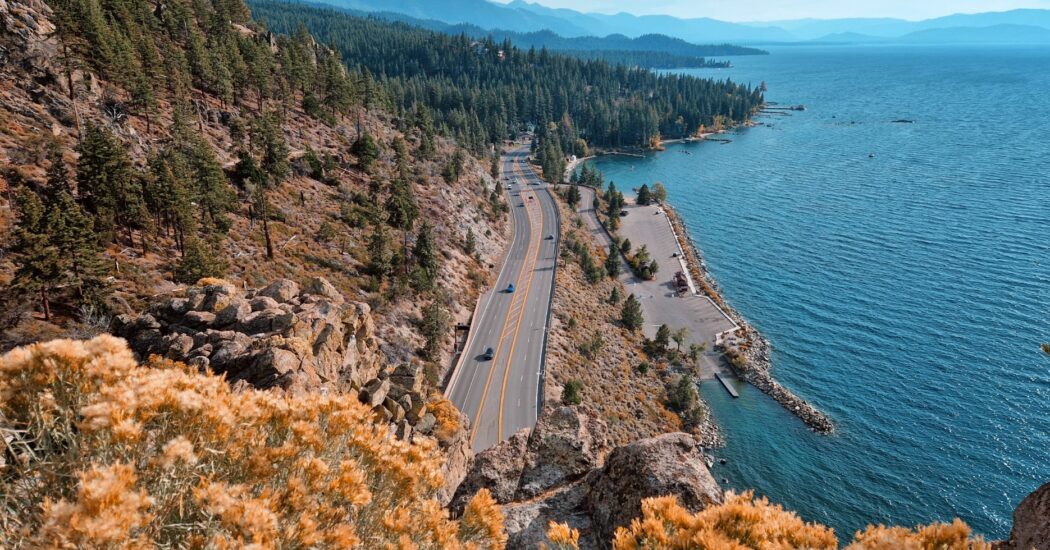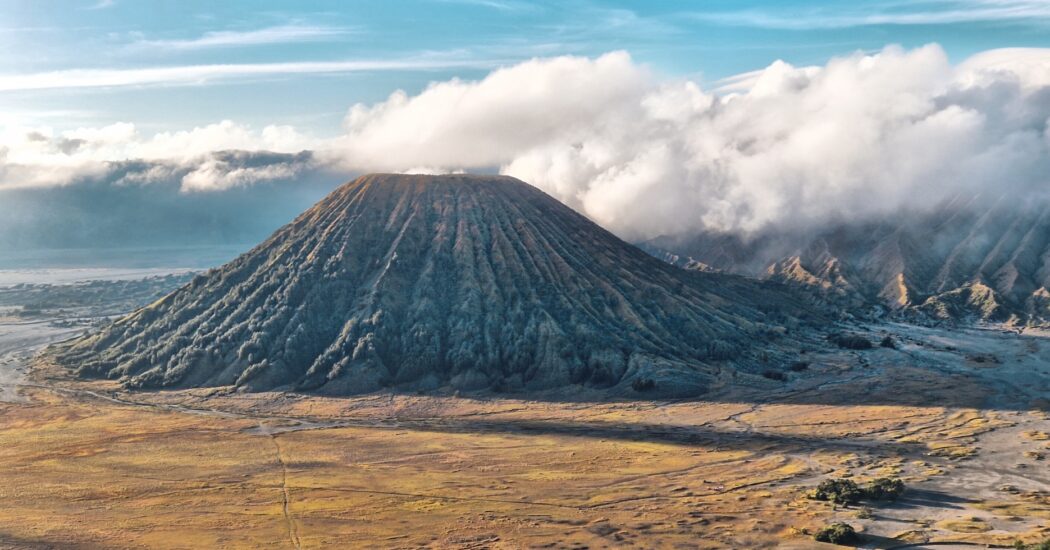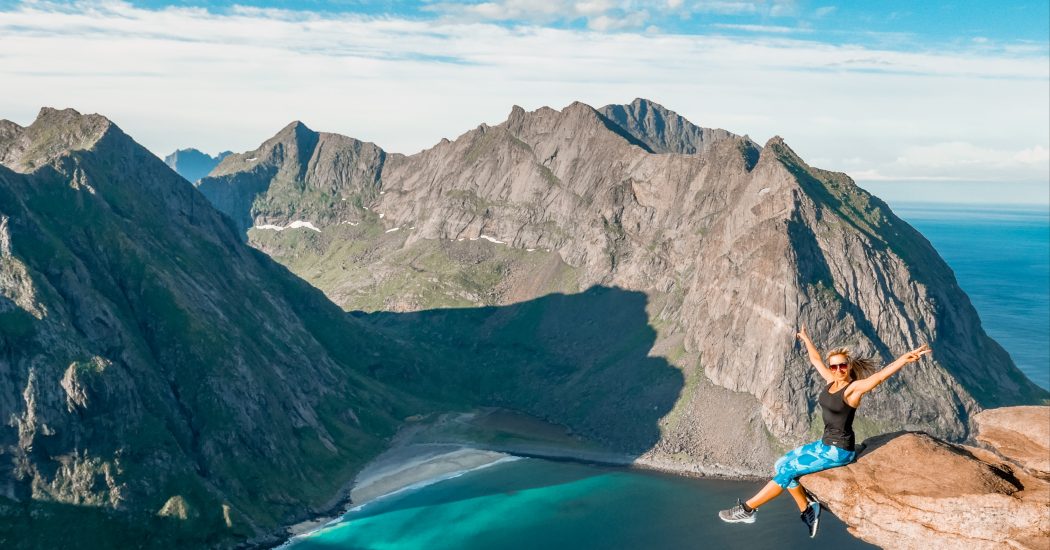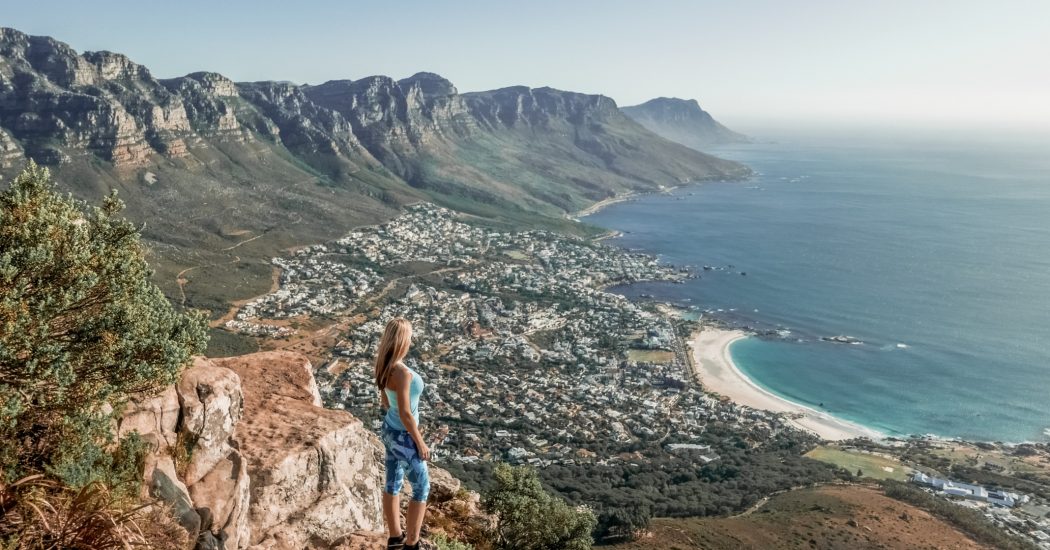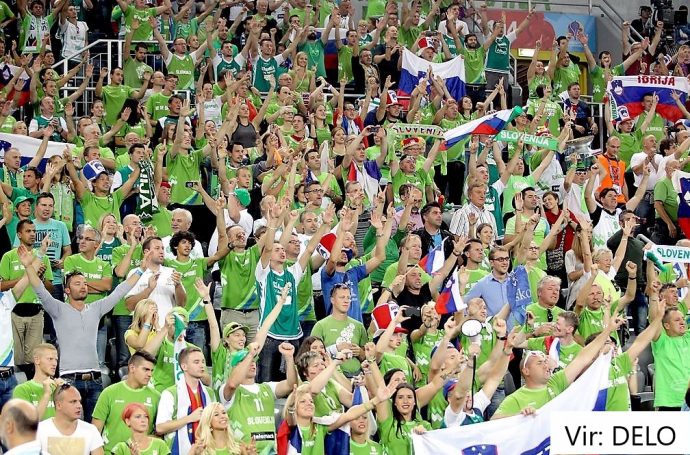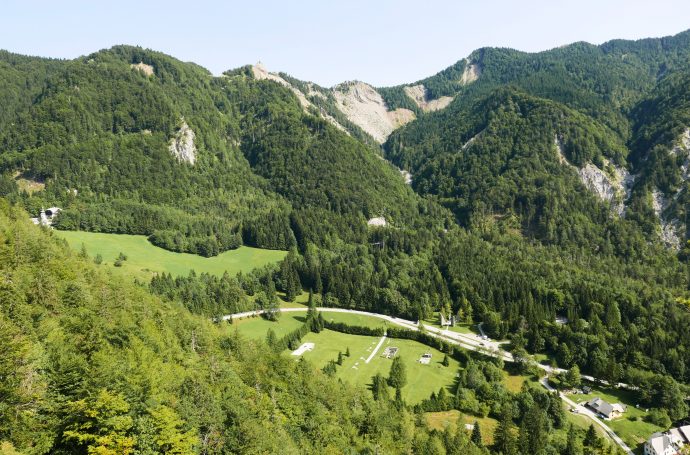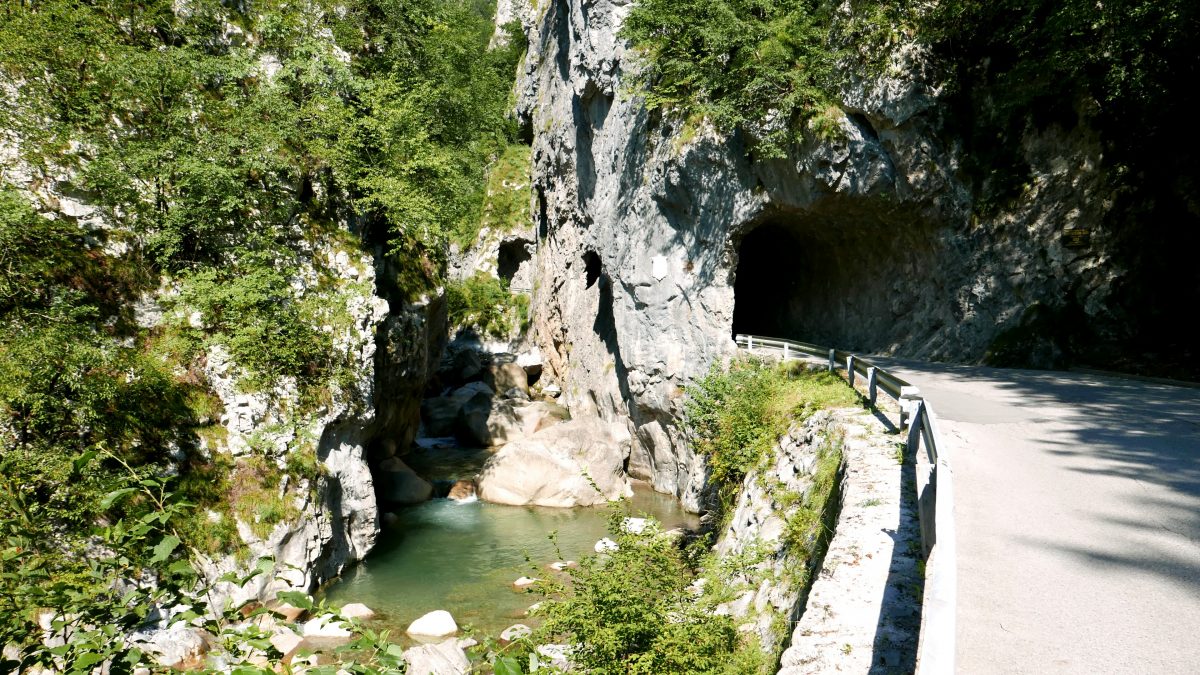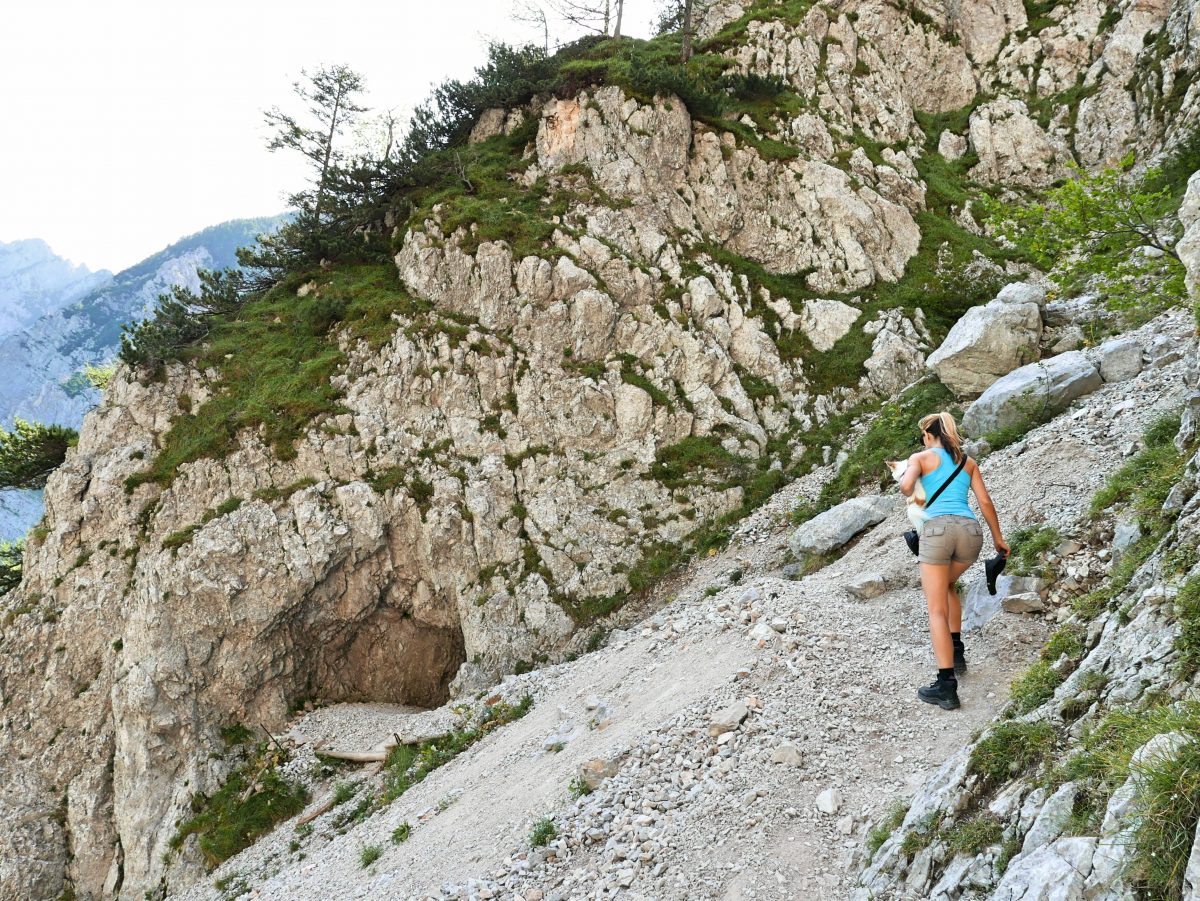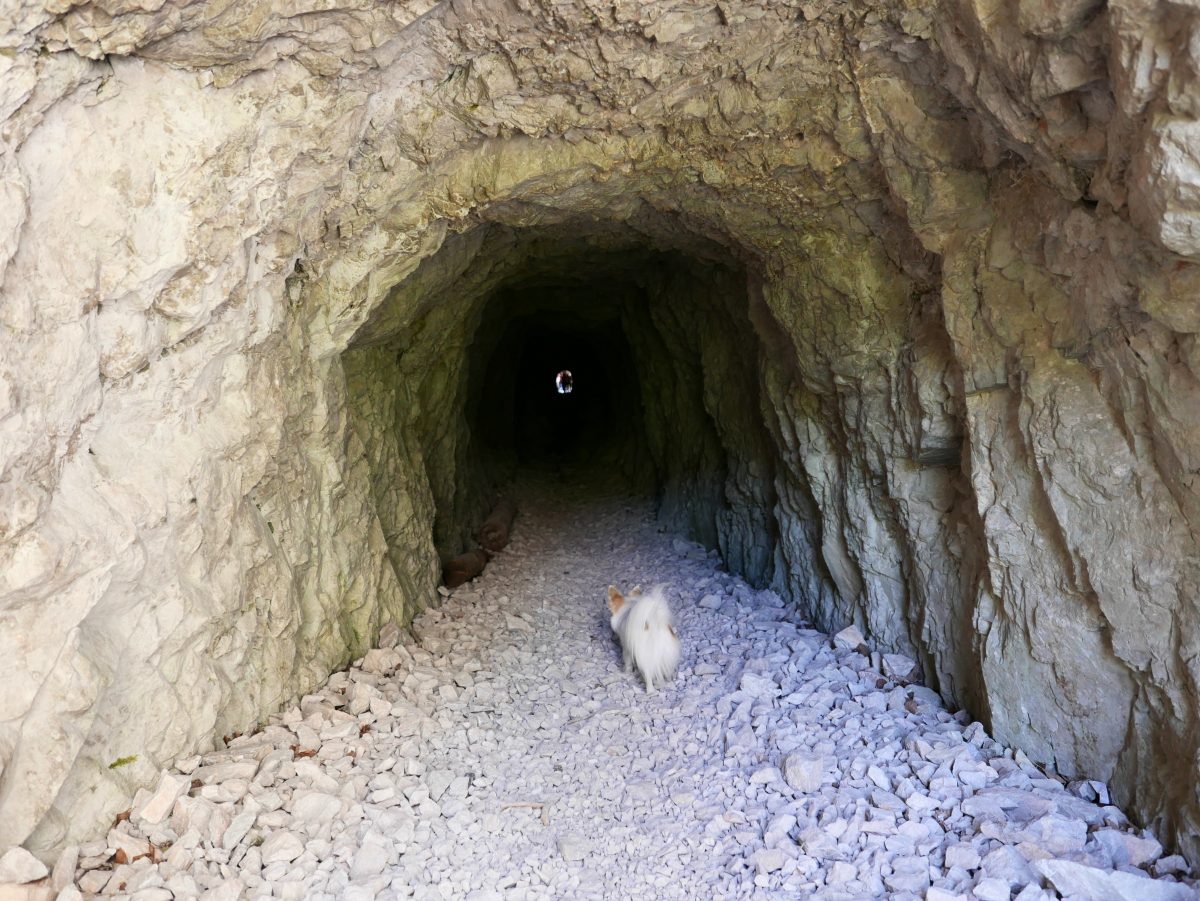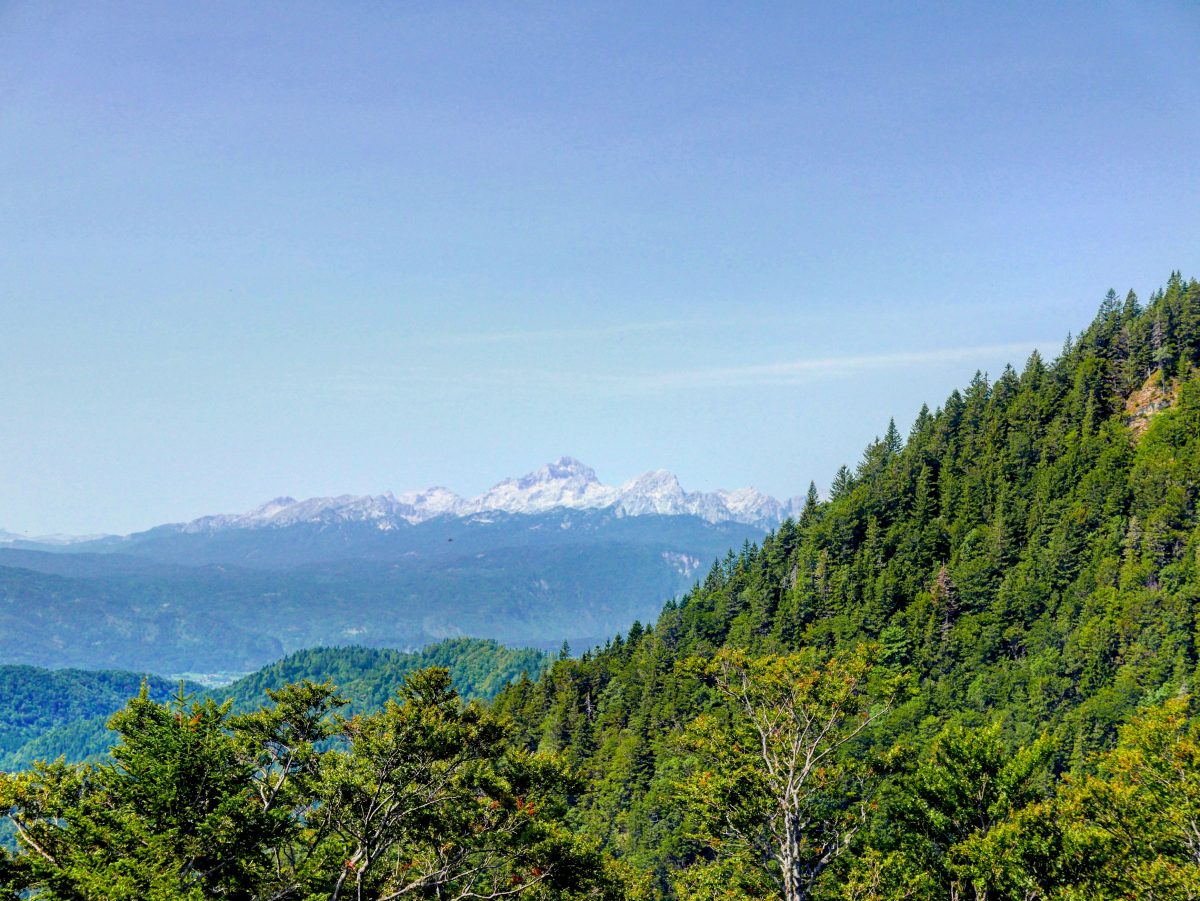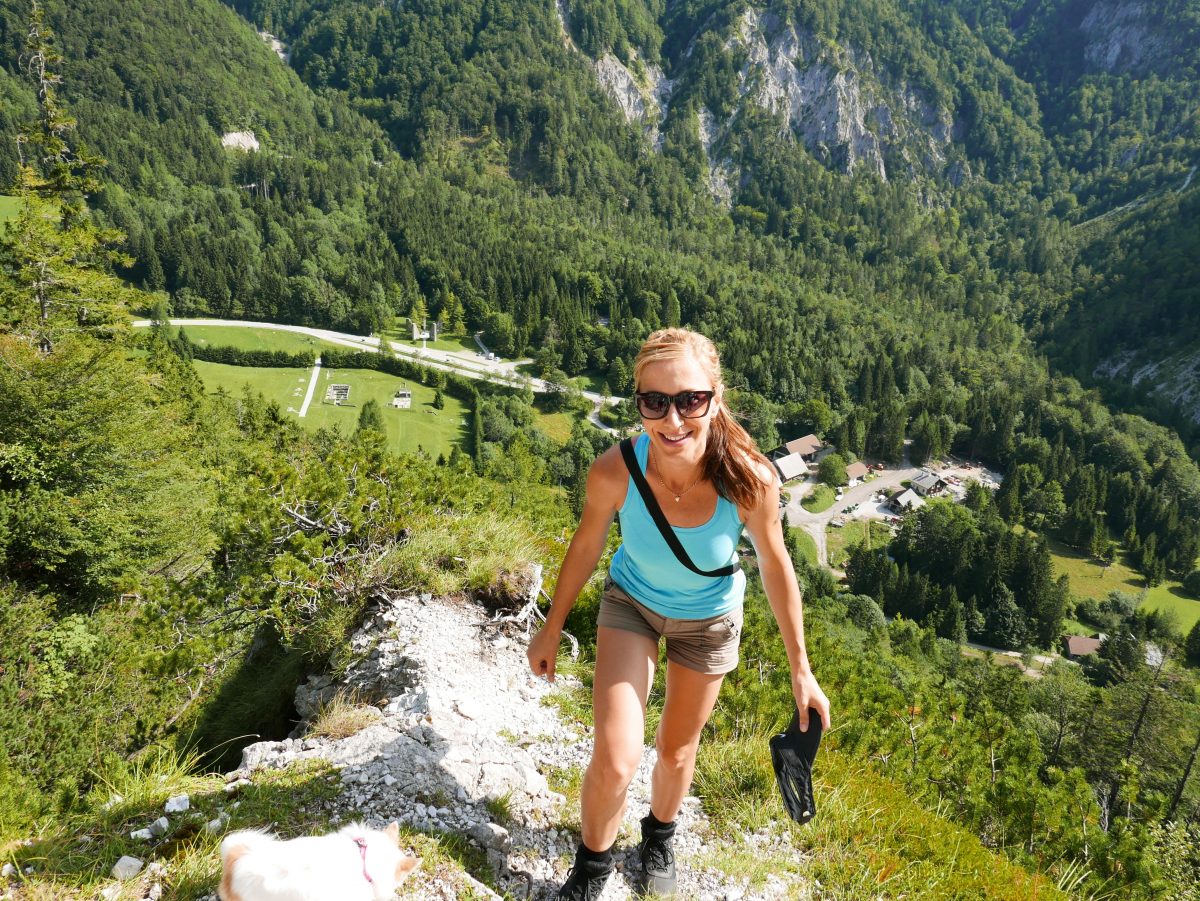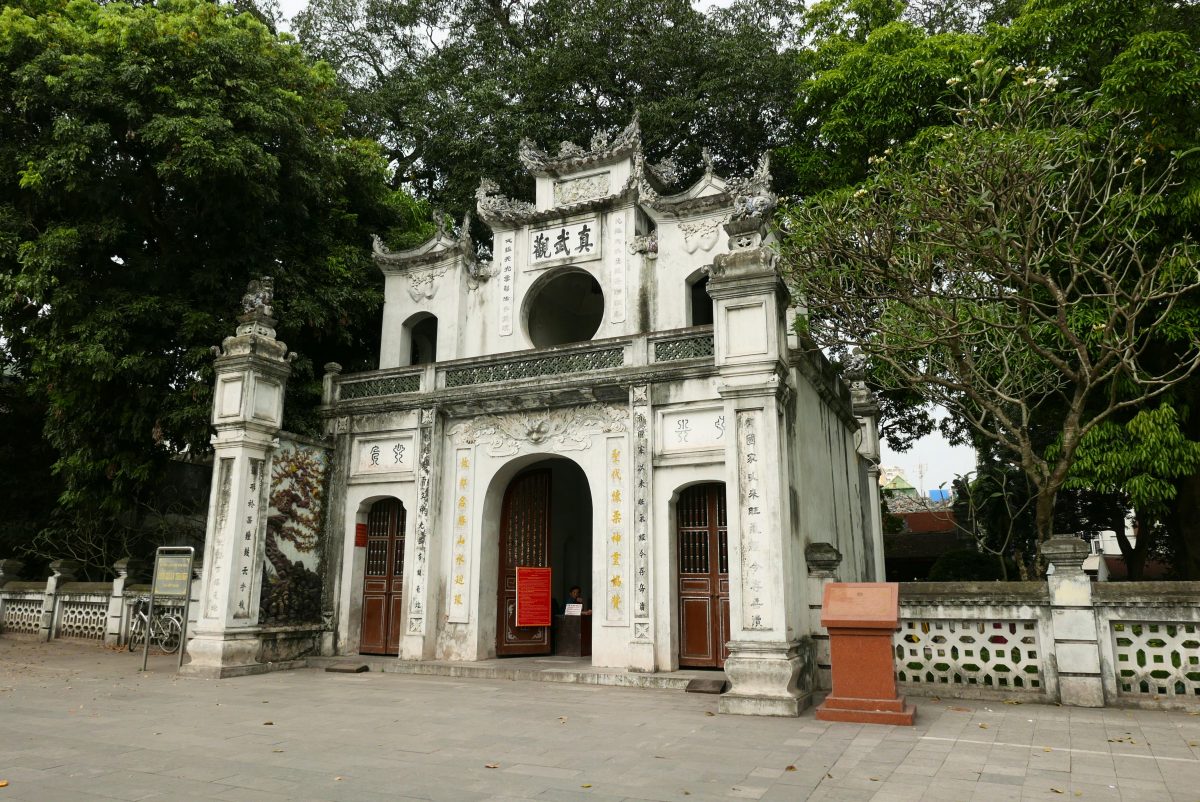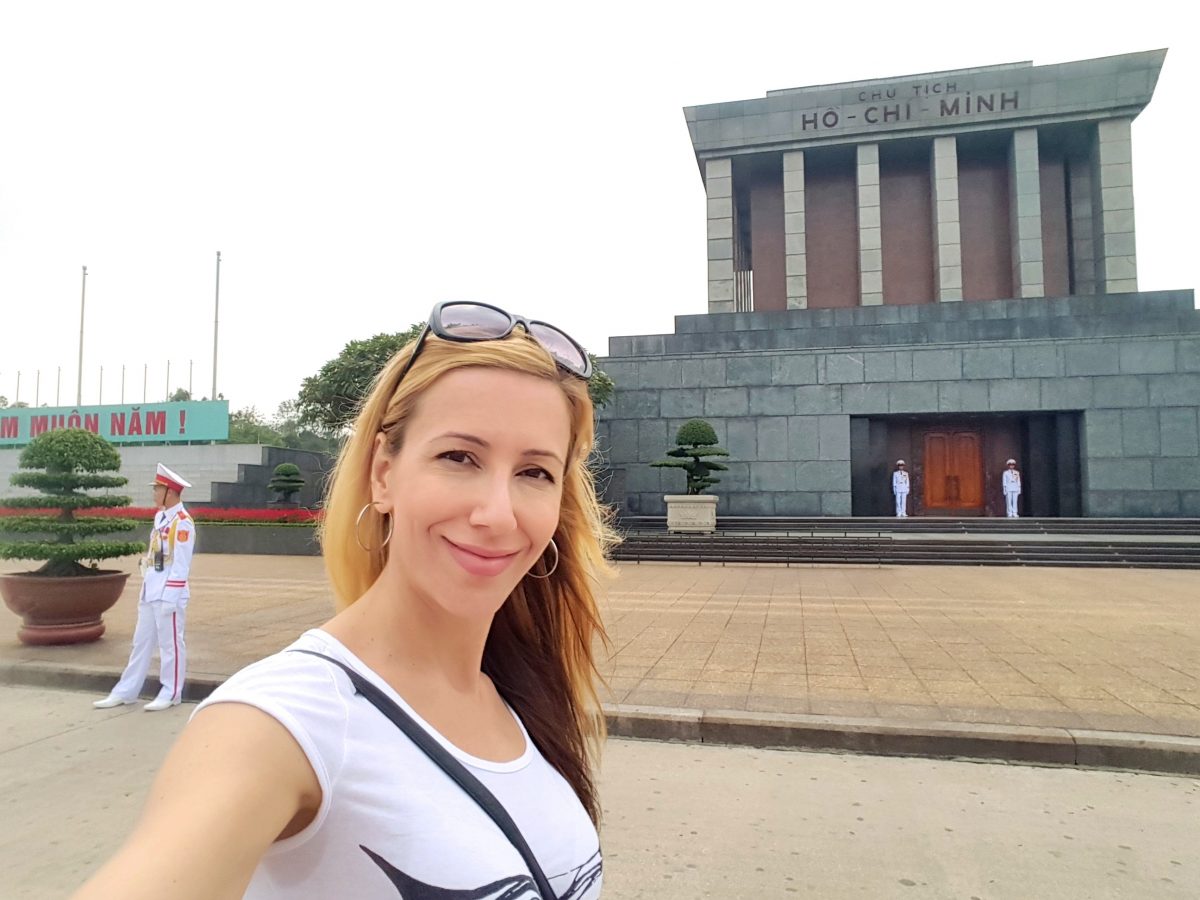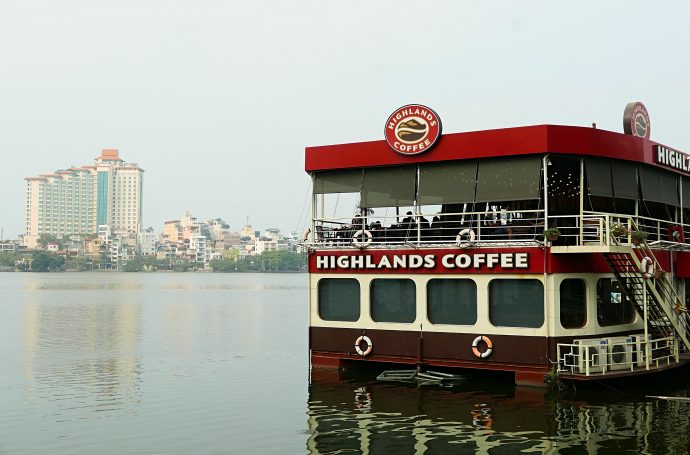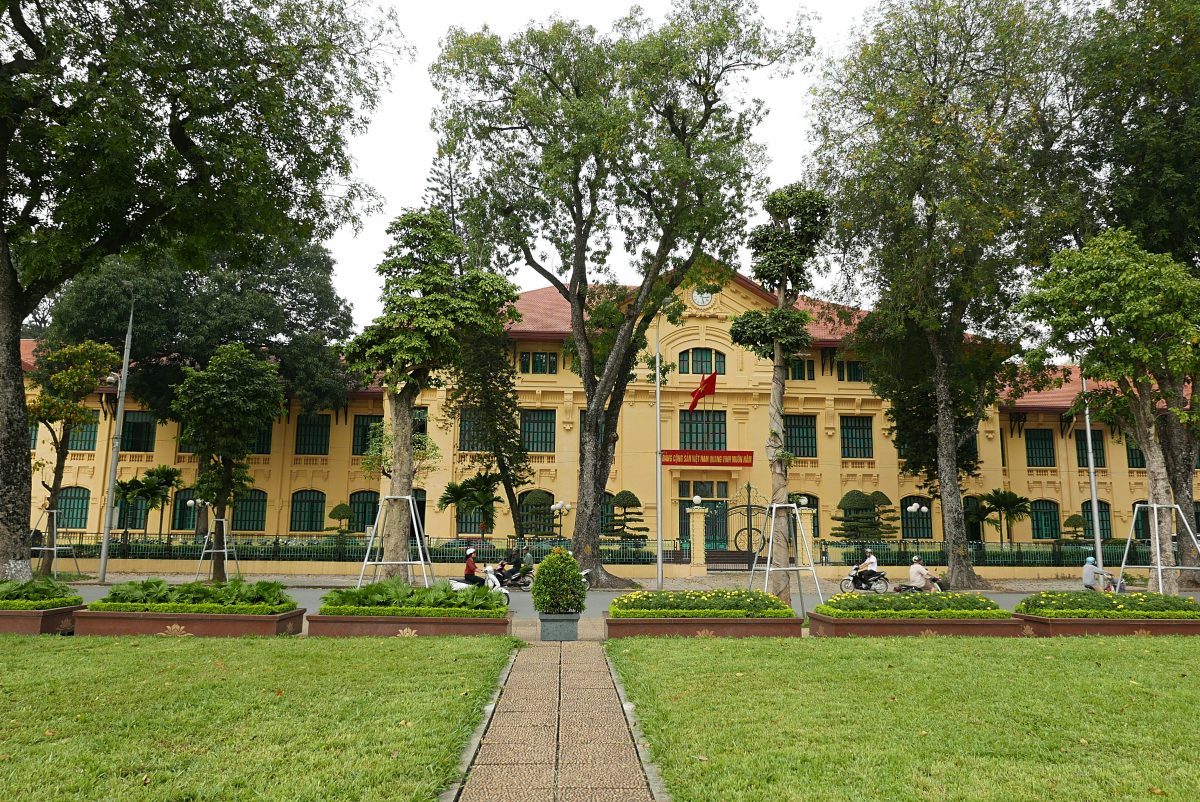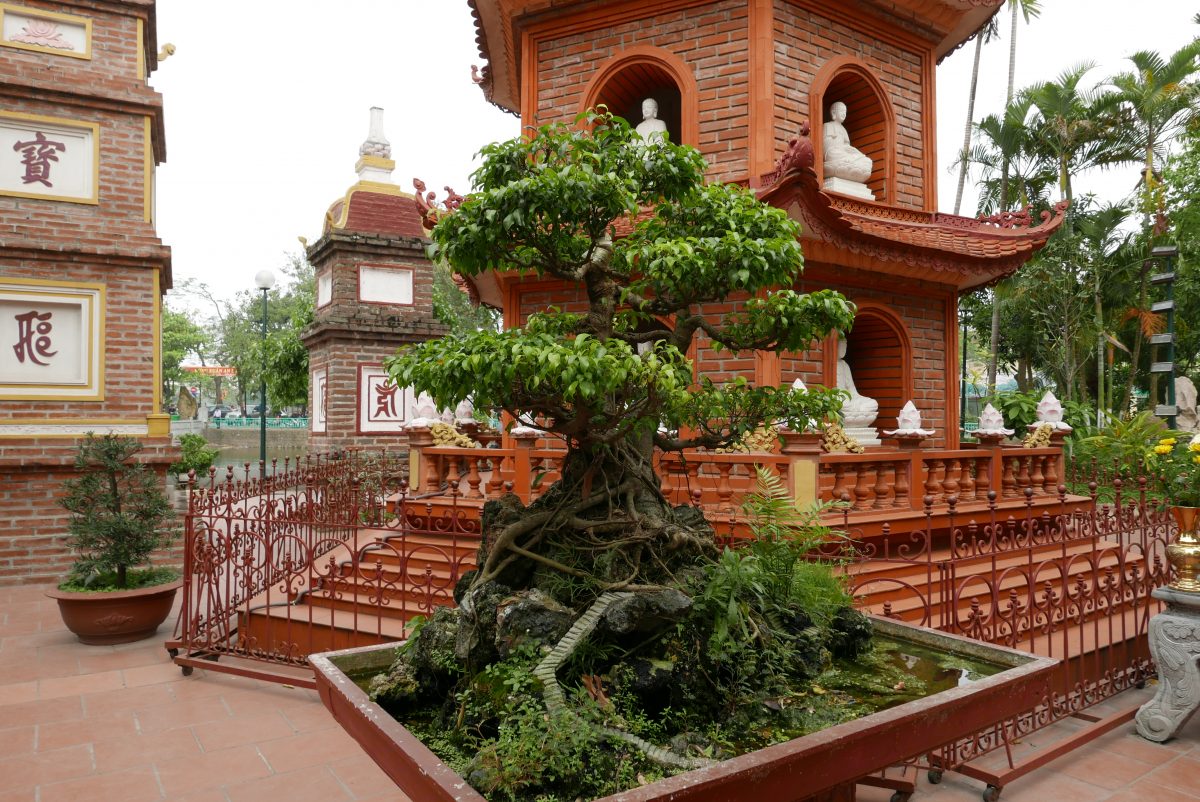Grad s pogledom na kamnolom. Dolgčas, boste rekli. Kaj pa če vam povem, da gre za grad na pečini, s prečudovitim razgledom na Jadransko morje in da je kamnolom v resnici luksuzno naselje, kjer se počitniška stanovanja prodajajo po 7.000 € na kvadratni meter? In če dodam, da sta oba od Ljubljane oddaljena manj kot do Portoroža ter da vam za prečkanje meje ne bo treba stati v dolgi koloni, kot zadnje čase velja za obisk Hrvaške? Portopiccolo in Devin ležita le streljaj od slovensko-italijanske meje, ravno prav blizu za enodnevni izlet in hkrati ravno prav daleč za podaljšan vikend pri zahodnih sosedih.
Besedilo je bilo napisano za prilogo Ona (časnik Delo).
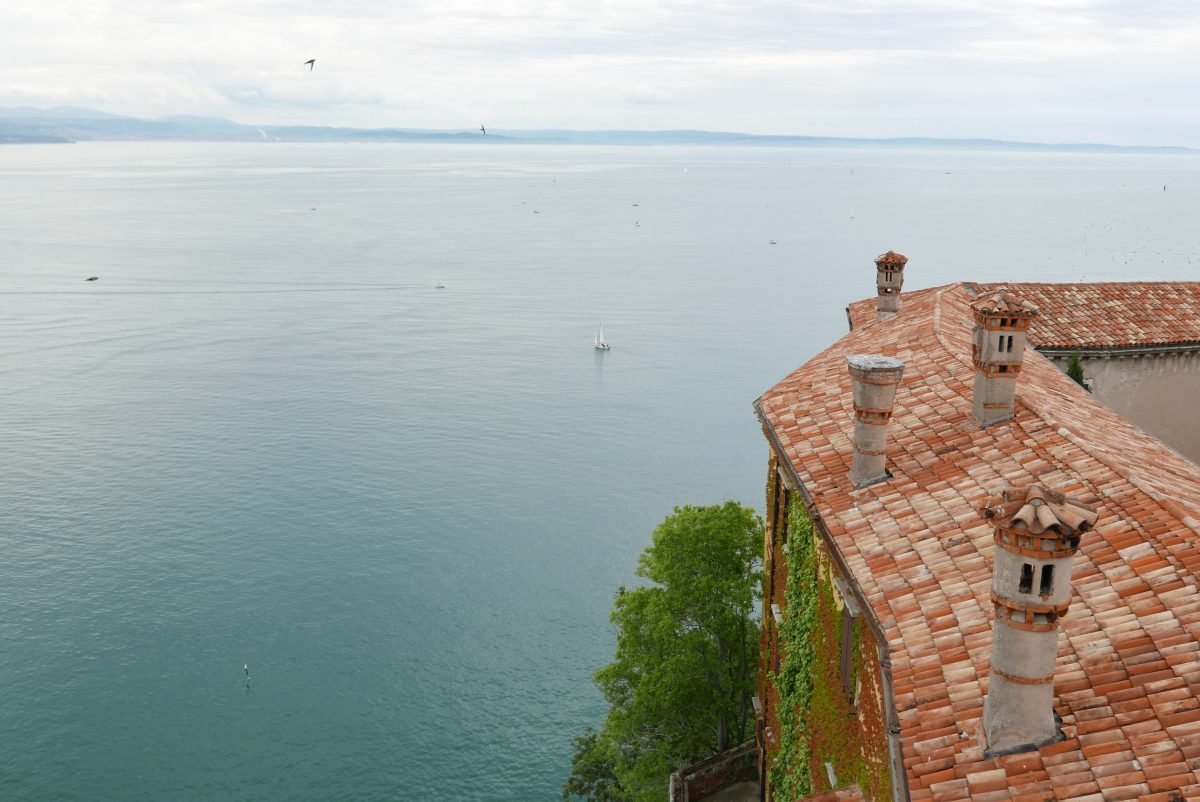
Vikend lahko začnete na Krasu
Ideja za skok čez mejo se je porodila na Krasu. Točneje, ob preizkušanju odličnega domačega pršuta in terana pri Špacapanovih v Komnu. »Kaj počnejo gostje pri vas, kadar ne jejo?«, hudomušno vprašam gospodarico Ado, dobitnico najbolj prestižne slovenske kulinarične nagrade, zlate žlice. »Eni kolesarijo, drugi obiščejo Lipico ali grad Štanjel, nekateri pa skočijo čez mejo do sesljanskega zaliva«, odvrne. Ko odprem spletni brskalnik, da bi pogledala, kaj zanimivega ponujajo sosedje, mi pogled pritegne znana fotografija slikovitega obmorskega naselja, ki sem jo v zadnjem letu kar nekajkrat zasledila na družbenih omrežjih. Gospa Ada pove, da so se še pred nekaj leti hodili kopat »h kamnolomu«, zdaj pa je tam zraslo povsem novo luksuzno letovišče. Na spletnem zemljevidu v neposredni bližini naselja opazim še grad in odločitev o obisku sosedov je kot na dlani.
Legenda o Beli dami
Devin leži na severnem delu Tržaškega zaliva in je znan predvsem po gradu z rumenim pročeljem, ki se ponosno dviga na kraški vzpetini nad Jadranskim morjem. V bistvu gre za dva gradova. Starejši se nahaja na sosednji, nižji vzpetini, do njega pa vodi ozka urejena pot. Gre sicer za razvaline, poraščene z nizkim grmičevjem, a zato nič manj vredne ogleda. Prvič, ker ponujajo čudovit razgled na novejšega »brata«, drugič pa zaradi legende o graščakinji Esterini da Portole, ki jo je ljubosumni mož pahnil skozi okno v morje. Esterina je padla na belo skalo in okamnela, njen duh pa se od takrat naprej vsako noč vrača v sobo njene ljubljene hčerke.
Grad, kjer še vedno prebivajo plemiči
Grad Devin v novi različici je nastal v 14. stoletju pod vladavino rodbine Wallsee in je danes v odličnem stanju, saj v njem še vedno biva plemiška družina Torre e Tasso, verjetno bolj znana pod imenom von Turn und Taxis. Lastniki so grad odprli za obiskovalce in resnično je prava paša za oči. Ljubitelji narave bodo navdušeni nad zeleno okolico, vodnjakom in vrtovi, posutimi s cvetjem in čudovitim pogledom na Tržaški zaliv. Tisti, ki imate raje umetnost in zgodovino, boste na svoj račun prišli ob ogledu dvornih soban, kjer so shranjeni predmeti številnih pomembnih gostov, ki so grad obiskovali skozi stoletja. Med njimi velja omeniti znana književnika Danteja Alighierija in Marka Twaina, skladatelja Johanna Straussa in Franza Lizsta, pa tudi predstavnike habsburške cesarske družine. Prav Devinske pečine pa naj bi bile navdih za nastanek mita o Lepi Vidi, ki je med pranjem pleničk na plaži pod gradom podlegla čarom »zamorca« in odjadrala z njim, upajoč na boljše življenje.

Da je bil Devinski grad pomembna strateška točka tudi skozi novejšo zgodovino, priča bunker pod gradom, ki je bil med drugo svetovno vojno vklesan v pečino. Do njega vodi strmo in spolzko stopnišče, na dnu pa je danes majhen, v skalo vklesan muzej z vitrinami, kjer hranijo zanimive zgodovinske predmete iz vojnega obdobja.
Po Rilkejevi pešpoti do Sesljanskega zaliva
V gradu je leta 1911 bival pesnik Rainer Maria Rilke, ki je v tistem obdobju začel pisati elegije in jih kasneje pod imenom Devinske elegije posvetil grofici Mariji Von Thurn und Taxis, s katero sta imela kratko, a intenzivno razmerje. Rilke je s svojim delom v zgodovini gradu pustil tako velik pečat, da se še danes po njem imenuje razgledna pešpot, ki pelje vzdolž strme obale do Sesljanskega zaliva in ponuja čudovit razgled na severni del jadranskega morja. Pot je dolga dobra 2 kilometra in ob jasnem dnevu ponuja pogled na slovensko obalo, vse do Pirana, pa tudi malce čez, do Savudrije.
Sesljanski zaliv je priljubljena turistična točka predvsem poleti, saj poleg kopalnih užitkov ponuja tudi živahen nočni utrip. Za obiskovalce (med njimi so večinoma Italijani in Slovenci) sta na voljo dve brezplačni, lepo urejeni prodnati plaži, z izjemno čistim morjem, znanim tudi po tem, da lahko v njem srečate morskega konjička. Zvečer pa lahko uživate v enem izmed številnih barčkov na plaži, s pogledom na s sončnim zahodom obsijan Devinski grad.
Portopiccolo – luksuz sredi zapuščenega kamnoloma
Še do pred nekaj leti se je Sesljanski zaliv v smeri proti Trstu zaključeval z neuglednim kamnolomom, danes pa se tam bohoti luksuzno naselje Portopiccolo, ki ga poimenujejo tudi »Mali Monako«. Pogled na slikovito arhitekturno podobo, vklesano v živo skalo, je impresiven z vseh zornih kotov. Projekt je zasnovan kot strnjeno obmorsko naselje in prav vsa izmed 460 luksuznih počitniških stanovanj ponujajo čudovit razgled na Tržaški zaliv. Stanovanja dosegajo vrtoglave cene, tudi čez 7.000 € na kvadratni meter, vile in največji apartmaji pa so že prodani.
Lastniki projekta so naselje avgusta 2015 odprli tudi za »navadne smrtnike« in od takrat naprej se fotografije belih jaht in terasasto posajenih hišk vedno pogosteje pojavljajo na družbenih omrežjih. Zdi se, kot da ljudje tekmujejo, kdo bo na prizorišču posnel bolj ekskluzivno fotografijo in, roko na srce, celotna podoba naselja, kot tudi njegovi posamezni detajli, so zelo hvaležen fotomaterial.

Dostop do naselja je varovan z rampo, cesta pa vodi neposredno do podzemne garaže. Tam pustite avto in se sprehodite po labirintu lično urejenih ulic do tako imenovanega Beach Cluba, ki ponuja čudovit ambient za sproščene pogovore ob pijači, s pogledom na plažo in naselje. Beach Club ima tudi svoj bazen v turkizno modri barvi z belimi ležalniki, ki pa se med sezono kar hitro zapolnijo. Verjetno tudi, ali pa predvsem zato, ker celotno naselje ponuja brezplačen brezžični internet – in fotografije, ki jih posnamete v Portopiccolu, je treba takoj objaviti na medmrežju, mar ne?
Če želite okusiti pridih luksuza tudi kot gost naselja, lahko najamete katerega od apartmajev, ki jih lastniki ponujajo na različnih spletnih portalih, še nekaj več denarja pa boste morali odšteti za nočitev v hotelu s petimi zvezdicami Falisia, ki za dodatno razvajanje ponuja tudi SPA in lepotni center. Več fotografij naselja Portopiccolo lahko najdete v mojem Facebook albumu.
Glede na bližino slovenske meje je Portopiccolo vsekakor zanimiva izletna destinacija, odločitev o tem, koliko luksuza si boste privoščili, pa je izključno vaša. Če ga boste obiskali v visoki sezoni in želite kot dnevni gost vsaj nekaj udobja, potem morate biti pripravljeni seči nekoliko globje v žep. Če želite prihraniti kak evro, lahko avto pustite na parkirišču pred Sesljanom in se tja odpravite peš, okopajte pa se raje na eni izmed dveh že omenjenih brezplačnih plaž v neposredni bližini. Meni najljubši čas za obisk sta pomlad in jesen, ko je sonce ravno prav prijetno, o gneči ni ne duha ne sluha, parkiranje v garažni hiši pa je celo brezplačno. Takrat se tudi trije evri za omamno dišeči kapučino na promenadi Beach Cluba ne zdijo prevelik greh za »dolce far niente«.

Še nekaj koristnih informacij:
- V Devin se iz ljubljanske smeri najhitreje pride po avtocesti, ki na italijanski strani Fernetičev zavije proti Benetkam, ter z izvoza pri Sesljanu. Ko se pripeljete do mesteca, sledite oznakam za »Castello di Duino« (italijansko ime za grad Devin), parkirate pa lahko v eni izmed ozkih ulic, ki vodijo do gradu. Več fotografij lahko najdete v mojem Facebook albumu.
- Devinski grad je za obiskovalce odprt vsak dan od 9.30 do 17.30, razen ob torkih. Vstopnina za odrasle je 8€, otroci in starejši od 65 let imajo popust. Za ogled starega gradu boste doplačali še 2€.
- Kopanje na plaži v Portopiccolu bo vašo denarnico olajšalo za 16€ na osebo, za najem 2 ležalnikov in senčnik pa boste med vikendom v polni sezoni odšteli kar 70€. Parkiranje v garaži med tednom stane 8€ na dan, med vikendom pa 12€.
- Portopiccolo in Devin lahko obiščete s kužkom. Da imate s seboj vrečko za pobiranje kakcev, je seveda samoumevno.
Članek je bil objavljen tudi v reviji Ona, julija 2017.
